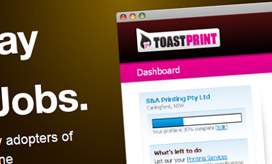
Although most print passes through purchasing departments, sales and marketing are still the initiators of print, with strong involvement of creative designers. The larger the company, the more fragmented the process. Print sales will be more complex over time; and thus electronic procurement will become the norm.
Most print buying involves some level of contract. This covers the periodical, catalogue, directory, and some parts of the book markets. Printer and print buyer know exactly what each will receive over the term of the contract. The next largest segment involves print that has been planned in advance and the printer has prepared for it with paper purchases, press time, etc.
These last two areas account for 63% of printing in the US. The balance is why printers stay awake at night: 16% is predictable in that the client is a regular customer, but the volume is usually unpredictable; 11% is occasional in that the client uses the printer infrequently, and 10% is erratic in that the printer has no forewarning – it comes in “over the transom”. Most clients with contract and planned work can be trained to provide files in a consistent form. All the others are part of the problem.
Purchasing of all printing falls into five categories: contract (42%), planned (21%), predictable (16%), occasional (11%), erratic (10%).
It is said that 1% to as much as 15% of most companies’ revenues involves print, no matter what their business. That sort of data makes sense, since companies need print to communicate with their customers and potential customers.
Most printing comes from the business community. Publishing (where the printing is the final product) is now about 30% of all print purchasing, but it tends to be purchased differently than business-related print. Publishers have annual and multi-year contracts with printers. This is not common in most other print buying.
Print buying is an interesting blend of art and science… and even a little black magic. The early dotcoms tried to “automate” print buying by inserting themselves between buyer and seller. Some are still trying this intermediary approach. I think such automation only works for relatively simple jobs. After that, you need a real human being.
The major change in print buying is that more buyers have less knowledge. At one time, companies had purchasing departments with specialists in various areas. Today, they are all generalists. So marketing departments try to buy direct where they can, or lump the printing in with the design purchase. As a result, more creative professionals buy print than ever before.
Information about print buying is still scant. The reason is that print buyers, like designers, do not congregate. It is hard to find them because there is no publication or association that a mass of them use. Those that can be found tend to be the large print buyers, and their data may not be representative of the entire market.
Through most of this new century, print will be produced in factory facilities. They may be smaller and more advantageously located, but we do not expect a significant volume of print to move to the home or office. There are 296 printing companies in the US (out of about 30,000) that have about 3,500 plants. A major reason for multiple plants is realisation of the “distribute and print” model which moves manufacturing closer to the point of mailing or delivery.
Frank Romano is professor emeritus at the Rochester Institute of Technology.
Comment below to have your say on this story.
If you have a news story or tip-off, get in touch at editorial@sprinter.com.au.
Sign up to the Sprinter newsletter

